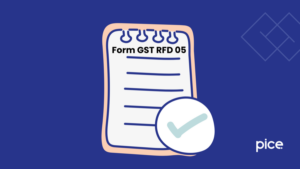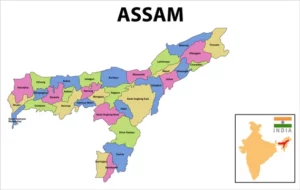GST on the Advertising Industry
- 19 Aug 24
- 14 mins

GST on the Advertising Industry
Key Takeaway
- GST has standardized the tax rate for all advertising services at 18%, simplifying tax calculations across various media.
- The uniform GST rate enables businesses to better manage cash flow through the benefit of input tax credits on advertising expenditures.
- Purchasing space in print media now follows a simplified tax process with a single GST rate, replacing the earlier combination of VAT and service tax.
- Advertising companies must comply with the reverse charge mechanism for services procured from abroad, ensuring proper GST payments and filings.
- Accurate use of SAC codes is essential for compliance and optimizing tax benefits in the advertising sector under GST.
Tax Implications for the Advertising Sector Before GST
Before the implementation of the Goods and Services Tax (GST) in July 2017, the advertising industry in India was subject to a multifaceted and somewhat complex taxation system. Different components of advertising were taxed under various heads, which often led to confusion and an increased administrative burden. Here’s a closer look at the tax implications for the advertising sector before the introduction of GST:
Service Tax
The predominant tax applied to the advertising sector was the service tax, introduced in 1994. By the time GST was implemented, the service tax rate had escalated to 15%, inclusive of Krishi Kalyan Cess and Swachh Bharat Cess. This tax was applicable to all services provided by advertising agencies, whether it involved creative input, purchase of media space, or planning and executing advertising campaigns.
Value Added Tax (VAT)
For print advertisements, such as those in newspapers and magazines, VAT was applicable in addition to the service tax. VAT rates varied from state to state, generally ranging from 5% to 15%. This state-level tax was imposed on the physical aspect of the advertisements, like the sale of advertising space in a publication.
Central Sales Tax (CST)
In instances where advertising services involved elements of cross-state supply, such as materials or print ads produced in one state and delivered to another, Central Sales Tax (CST) could also come into play. This further complicated the tax structure for the advertising sector, leading to layered tax obligations that varied significantly across different states.
Cascading Tax Effect
A major challenge under the pre-GST tax regime was the cascading effect of taxes. Advertising agencies often could not claim input tax credits for the VAT paid on goods (like print materials), against the service tax payable on their services. This lack of input tax credit led to higher costs being passed on to the end consumer, making advertising more expensive.
The complexity of managing multiple taxes, compliance with different state laws, and the inability to offset taxes across stages of value addition made the pre-GST tax system cumbersome for the advertising industry.
Advertising Sector Post-GST and Applicable Tax Rates

With the implementation of the Goods and Services Tax (GST) in July 2017, the advertising sector in India underwent significant changes regarding tax rates and overall tax structure. GST sought to streamline tax administration and eliminate the cascading effects of the prior multi-tier tax regime, bringing more clarity and uniformity across various service sectors, including advertising.
Unified Tax Framework
Under the GST regime, all types of advertising services are subject to a unified tax framework. This marked a substantial shift from the previous system where service tax and various other state-level taxes like VAT were applied inconsistently across different types of media. The GST system brought these disparate practices under a single tax structure, simplifying the tax process.
Applicable GST Rates
The applicable GST rate for advertising services is set at 18%. This rate is uniform for all types of advertising services, whether it involves print, digital, electronic media, or outdoor advertising. The consistent rate helps in simplifying the tax calculation process for businesses and reduces the administrative burden significantly. Here are the types of advertising and how they are taxed under GST:
- Print Advertising: This includes advertisements in newspapers, magazines, and other printed materials.
- Digital and Online Advertising: Encompasses advertising services provided through digital platforms, including social media, search engines, websites, and any form of digital media.
- Broadcast Advertising: Applies to advertisements broadcasted through television and radio channels.
- Outdoor Advertising: Includes billboards, transit advertisements, banners, and any other form of outdoor advertising.
💡If you want to pay your GST with Credit Card, then download Pice Business Payment App. Pice is the one stop app for all paying all your business expenses.
Impact of Uniform Tax Rate
The uniform tax rate under GST brings several advantages to the advertising sector:
- Simplification of Tax Processes: Businesses no longer need to navigate through various tax rates and rules for different types of advertising media. A single tax rate applicable across all media simplifies accounting and tax filing.
- Improved Cash Flow: The ability to claim input tax credit on GST paid on inputs and input services (like creative services, production costs, and media buying) allows businesses to manage cash flows better. This input tax credit mechanism prevents the tax-on-tax scenario that was prevalent earlier.
- Cost Efficiency: The input tax credit facility under GST can potentially lower the overall cost of advertising campaigns by offsetting the GST paid on inputs against the GST due on output services. This can make advertising services more cost-effective for clients.
Compliance Considerations
The GST regime mandates regular and systematic filing of returns, along with detailed accounting of input credits and output tax. Advertising agencies and their clients must ensure they maintain precise records to comply with GST regulations and to make the most of the benefits offered by the new tax structure. Compliance is facilitated through the GST portal, where businesses can file their returns, manage their tax payments, and claim input tax credits.

Advertisement through Advertisement Agency under GST
Advertising agencies play a pivotal role in the marketing strategies of businesses across all sectors. These agencies offer a comprehensive suite of services, including creative development, media planning, and buying, digital marketing, and more. With the implementation of the Goods and Services Tax (GST) in India, the way these services are taxed has seen a significant shift. Understanding the impact of GST on services rendered by advertising agencies can help businesses manage their advertising budgets more effectively.
GST Implications for Advertising Services
Under GST, all services provided by advertising agencies are taxed at a standard rate of 18%. This uniform rate applies regardless of the type of advertising—be it print, digital, broadcast, or outdoor. Here’s how GST impacts different facets of services offered by advertising agencies:
- Comprehensive Tax Coverage: Unlike the pre-GST era where different components of advertisement space could attract different types of taxes such as service tax, VAT, and others depending on the mode of advertisement, GST encompasses all these under a single tax regime. This uniformity simplifies the tax process for both the agencies and their clients.
- Input Tax Credit Benefits: One of the significant advantages under GST for advertising agencies and their clients is the ability to claim input tax credit (ITC). This means that the GST paid on the agency’s inputs (like software, office supplies, and outsourced services) can be offset against the GST charged to their clients on the output service. This system effectively lowers the cost of advertising by reducing the tax liability, provided that these inputs are used directly for taxable services.
- Billing and Invoicing: GST requires detailed invoicing practices. For advertising agencies, this means providing comprehensive breakdowns of the services rendered and the GST applied. These invoices are crucial not only for compliance but also for clients who need them to claim their input tax credit.
- Cross-State Services: Advertising agencies often serve clients across different states. GST has made inter-state service provision simpler by subsuming various state and central taxes into one. However, agencies need to be aware of the location of supply rules to determine the correct place of supply and ensure compliance in cases where services are rendered across state lines.
- Reverse Charge Mechanism: In certain cases, such as when services are imported or procured from unregistered vendors, the reverse charge mechanism (RCM) may apply. Under RCM, the recipient of the services (in this case, the advertising agency or its client) is responsible for the payment of GST, which they can later claim as an input tax credit.
Challenges and Considerations
While GST has streamlined the tax framework for advertising services, agencies and their clients must navigate several challenges:
- Compliance: Ensuring compliance with GST laws requires meticulous record-keeping and up-to-date knowledge of GST regulations, which can be particularly challenging for smaller agencies.
- Cost Management: While the input tax credit system under GST is beneficial, it requires careful financial planning and management to ensure that all credits are accurately claimed and utilized.
- Educating Clients: Agencies also bear the responsibility of educating their clients about the implications of GST on their advertising spends, especially regarding how the input tax credit can be leveraged to reduce overall costs.
Advertising Through Individuals Registered Abroad
With globalization and the expansion of digital marketing platforms, it's increasingly common for Indian businesses to engage advertising and marketing services from individuals or agencies registered abroad. Under the GST regime, this aspect of advertising brings specific considerations regarding tax liability and compliance.
GST on Foreign Advertising Services
Services received from abroad are treated under GST through the mechanism of the reverse charge (RCM). This means that the recipient of the services in India is responsible for paying the GST, rather than the foreign service provider.
- Taxability: The GST rate applicable is generally the same as it would be if the service were provided domestically, which is 18% for advertising services.
- Reverse Charge Mechanism: Under RCM, the Indian company receiving the services must self-assess and pay GST directly to the government. This is intended to simplify tax collection and ensure compliance when the service provider is not based in India.
- Place of Supply Rules: For services imported from abroad, the place of supply is considered to be the location of the recipient. Therefore, Indian companies must ensure they comply with local GST regulations, including the payment of tax under RCM.
Compliance and Documentation
Businesses must maintain accurate documentation for all services procured from abroad, including contracts and payment receipts, to support the GST payments under RCM. They must also file regular returns that reflect these transactions to remain compliant with GST laws.
Input Tax Credit for GST on Marketing and Advertising Services

One of the major benefits introduced by GST for businesses involves the ability to claim input tax credits (ITC) on goods and services used to bring in further taxable supplies. This is particularly impactful in the marketing and advertising sector, where significant expenditures can be offset against GST liabilities.
Eligibility for Input Tax Credit
- Direct Link to Output Service: To claim ITC, the expense must be directly linked to the taxable output service. For example, GST paid on hiring graphic designers, purchasing software for marketing purposes, or outsourcing part of the advertising process can be claimed as input credit.
- Documentation: Proper invoices detailing the GST paid on purchases and services are crucial. These invoices serve as the basis for claiming ITC.
- Exclusions: There are specific exclusions in the GST law that prevent claiming ITC. For instance, goods or services used for personal consumption, or those given as gifts or free samples, cannot be used to claim ITC.
Maximizing Input Tax Credit
- Vendor Compliance: Ensure that all vendors are GST-compliant, and their invoices correctly reflect GST charges and their GSTIN.
- Timely Claims: Input tax credit must be claimed within the stipulated time limits set by the GST law, typically within the financial year or before the annual return is filed, whichever is earlier.
- Reconciliation: Regular reconciliation of purchases and GST credits as per books with the filings and credits available as per the GST portal (GSTR-2A or GSTR-2B) is necessary to ensure that all credits are correctly availed and discrepancies are addressed promptly.
SAC Code for Marketing Services
The Services Accounting Code (SAC) system is used in the Goods and Services Tax (GST) regime to classify services uniformly. Each service under GST is given a unique code to ensure that GST is applied correctly and uniformly across similar services. For marketing services, the specific SAC codes vary depending on the nature of the service provided.
Marketing services encompass a wide range of activities aimed at promoting a company's products or services. These can include market research, digital marketing, direct marketing campaigns, and more. Here are some commonly used SAC codes for different types of marketing services:
- 998361: Management consulting and management services including financial, strategic, human resources, marketing, operations and supply chain management.
- 998362: Business consulting services including public relations services, not elsewhere classified.
These codes help in identifying the specific type of marketing service provided and ensure that the correct GST rate is applied, which is typically 18%.
SAC Code for Advertising Services
Advertising services include a variety of activities related to the creation, planning, and handling of advertising for clients. These are critical for businesses looking to promote their products or services through various media channels. The SAC code for general advertising services is:
- 998365: Advertising services and provision of advertising space or time.
This code covers most types of advertising services, including digital advertising, print media advertising, broadcasting advertising on radio and television, and outdoor advertising among others. The standard GST rate applied to these services is 18%.
Importance of Correct SAC Codes
Using the correct SAC codes is crucial for several reasons:
- Compliance: Proper classification of services using the correct SAC codes ensures compliance with GST regulations, reducing the risk of audits and penalties.
- Tax Invoicing: When generating invoices for clients, advertising and marketing agencies need to mention the SAC code to ensure that the invoices are compliant and the right amount of tax is charged.
- Filing GST Returns: Accurate SAC codes must be reported in GST returns. Errors in SAC codes can lead to discrepancies in filed returns and might complicate the input tax credit claims for clients.
- Uniformity in Tax Rates: Correct SAC codes help in applying uniform tax rates across similar services, thereby avoiding confusion and ensuring fairness in taxation.
 By
By 
















